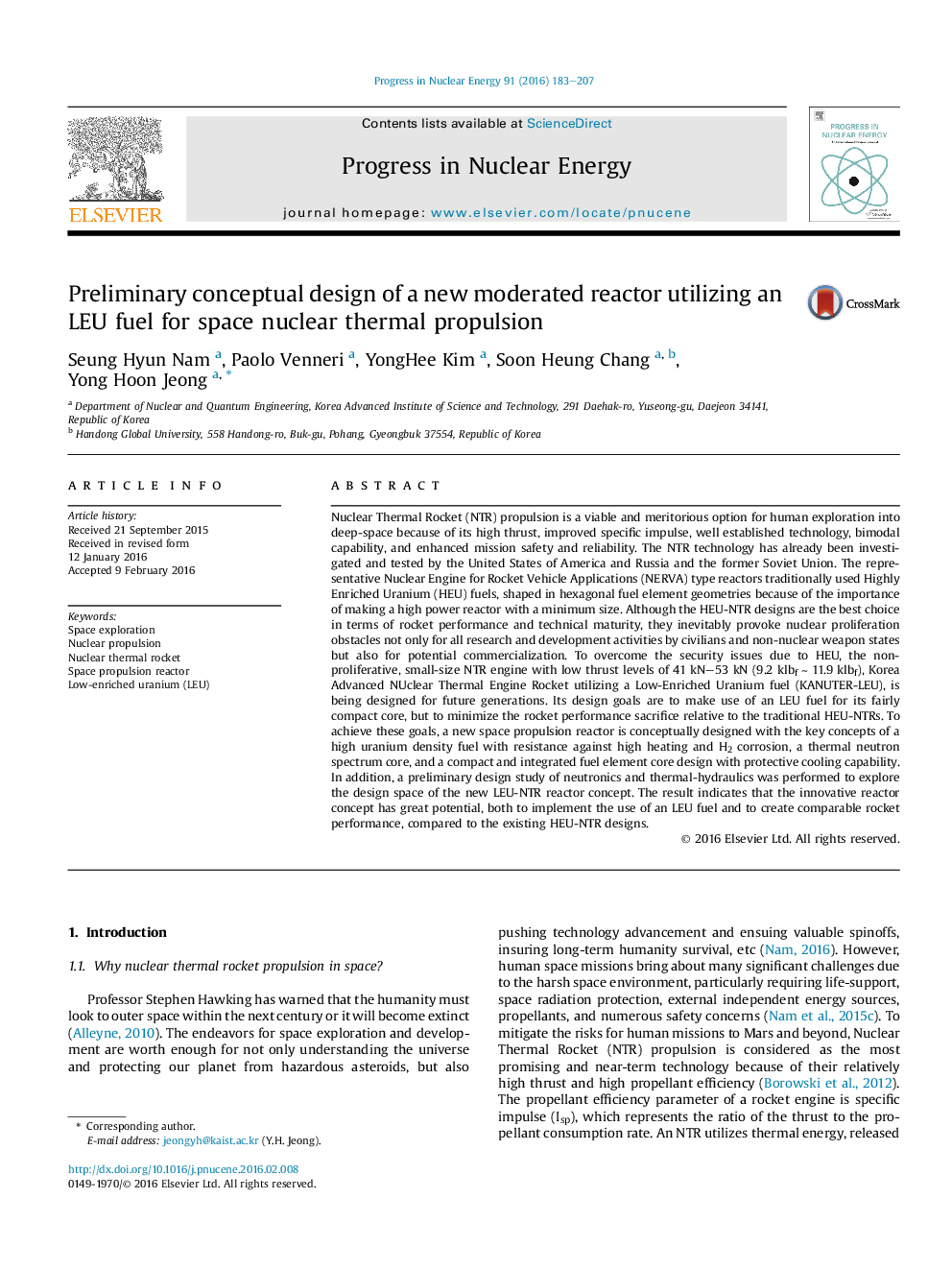| Article ID | Journal | Published Year | Pages | File Type |
|---|---|---|---|---|
| 8084876 | Progress in Nuclear Energy | 2016 | 25 Pages |
Abstract
Nuclear Thermal Rocket (NTR) propulsion is a viable and meritorious option for human exploration into deep-space because of its high thrust, improved specific impulse, well established technology, bimodal capability, and enhanced mission safety and reliability. The NTR technology has already been investigated and tested by the United States of America and Russia and the former Soviet Union. The representative Nuclear Engine for Rocket Vehicle Applications (NERVA) type reactors traditionally used Highly Enriched Uranium (HEU) fuels, shaped in hexagonal fuel element geometries because of the importance of making a high power reactor with a minimum size. Although the HEU-NTR designs are the best choice in terms of rocket performance and technical maturity, they inevitably provoke nuclear proliferation obstacles not only for all research and development activities by civilians and non-nuclear weapon states but also for potential commercialization. To overcome the security issues due to HEU, the non-proliferative, small-size NTR engine with low thrust levels of 41 kN-53 kN (9.2 klbf â¼Â 11.9 klbf), Korea Advanced NUclear Thermal Engine Rocket utilizing a Low-Enriched Uranium fuel (KANUTER-LEU), is being designed for future generations. Its design goals are to make use of an LEU fuel for its fairly compact core, but to minimize the rocket performance sacrifice relative to the traditional HEU-NTRs. To achieve these goals, a new space propulsion reactor is conceptually designed with the key concepts of a high uranium density fuel with resistance against high heating and H2 corrosion, a thermal neutron spectrum core, and a compact and integrated fuel element core design with protective cooling capability. In addition, a preliminary design study of neutronics and thermal-hydraulics was performed to explore the design space of the new LEU-NTR reactor concept. The result indicates that the innovative reactor concept has great potential, both to implement the use of an LEU fuel and to create comparable rocket performance, compared to the existing HEU-NTR designs.
Related Topics
Physical Sciences and Engineering
Energy
Energy Engineering and Power Technology
Authors
Seung Hyun Nam, Paolo Venneri, YongHee Kim, Soon Heung Chang, Yong Hoon Jeong,
